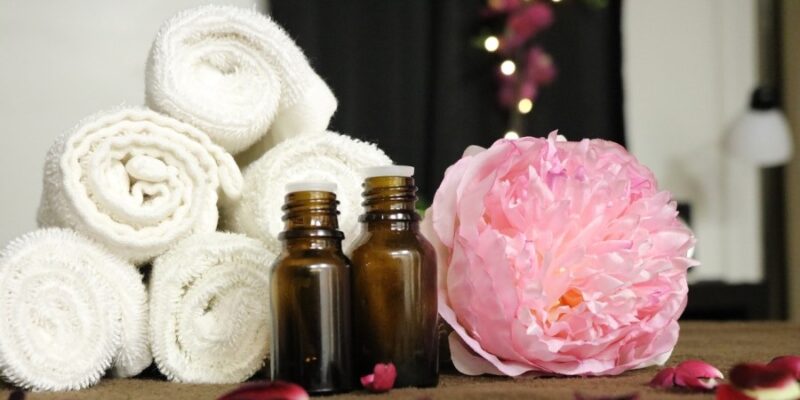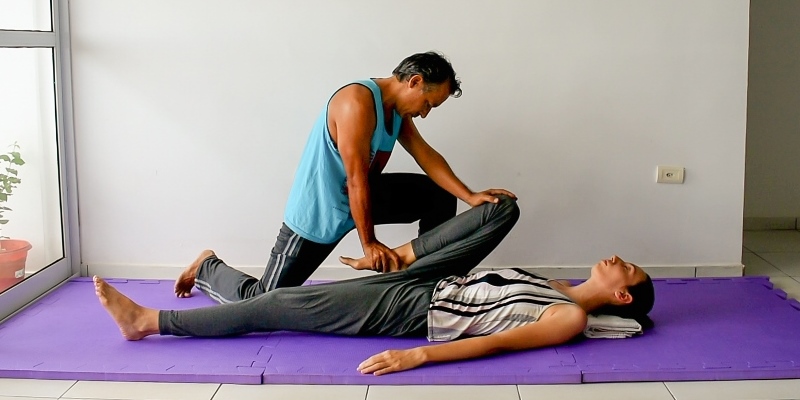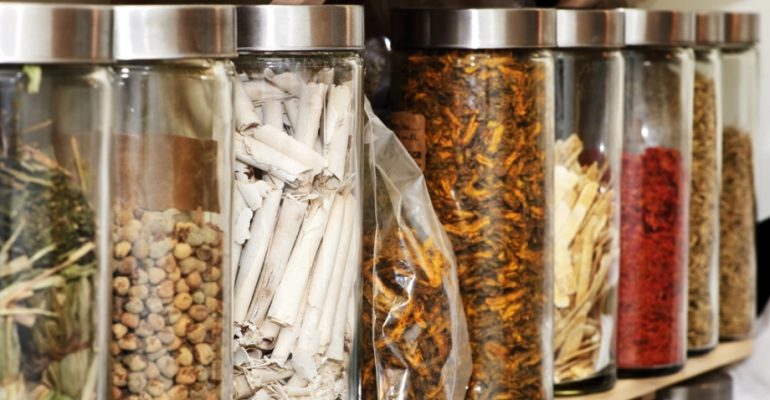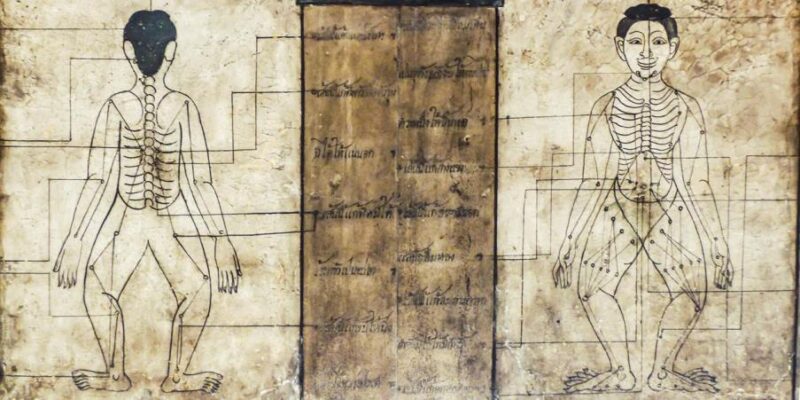
Perhaps you’ve noticed that you’d often see the addition Aromatherapy when a Thai Oil Massage treatment session is offered. Sometimes, you’d even see the phrase Thai Aromatherapy Massage.
Yet, the fact is that Thai Oil Massage and Aromatherapy are two distinct modalities. We’ll explain this further below in the remainder of this post.
Table of contents:
Thai Oil Massage
Thai Oil Massage is about giving deep pressure, gliding, rolling, stroking, rubbing and stretching movements using the palms, thumbs, elbows and knees in combination with the application of (warmed) base oils (also called carrier oils), the latter sometimes mixed with so-called essential oils.
Thai Oil Massage is, like Traditional Thai Massage (without oils), based on the concepts of traditional Thai healing bodywork, that is — working, opening, and stimulating the Sen Energy Lines, also called the Sip Sen or Sen Lines.
Mind also that Thai Oil Massage treatments are in reality a blend of Thai Traditional Massage, classic Western Oil Massage (typically Swedish Massage), Indian Ayurvedic Massage techniques (usually derived from Abhyanga Massage), knowledge of Western essential oils, and the ancient traditional plant and herbal knowledge of Thailand. The client typically receives the massage session (partly) undressed on a table.
Thai Aromatherapy
Aromatherapy or Aromatherapy Massage is based on the idea that using scented plant oils and/or plant essential oils to a base oil (such as Coconut oil or Almond oil), addresses specific ailments or needs of the receiver.

Essential oils can have medical properties such as relaxing, calming, soothing, energizing, stress-reducing, balancing, anti-inflammatory, and so on, and mixed with a base oil can stimulate a healing process.
For one part the scent of the oils (inhaled) is believed to have healing or relaxing properties (depending on which oils are used) and secondly, certain oils originating from specific plants, herbs, and/or flowers penetrate the blood stream when rubbed into the skin releasing their healing properties in the inside of the body.
Aromatherapy is said to bring about a variety of health benefits, like relief of discomforts or ailments such as burns, fevers, cuts, headaches, heat exhaustion, heatstroke, fractures, infections, insect bites, jet lag, sore muscles, physical exhaustion, stress, rashes, sleepiness, sprains, swellings, and many more.
In Conclusion
You could say that Thai Oil Massage and Aromatherapy is basically a hybrid Oil Massage with the explicit use of healing herbs.
Of course, the list of herbs, plants and flowers used in scented or essential oils is sheer endless, but to give some examples, think of chamomile, lavender, geranium, ylang ylang, sage, rose, rosemary, eucalyptus, pine, or tea tree, and the like.
Each plant or herb has its own specific qualities and healing properties and the knowledge of properties, extraction and application is key to a successful therapeutic Thai Oil Massage and Aromatherapy session.
However, when applying oils, certain contraindications may apply for people with allergies or skin sensitivities, infectious skin diseases, open wounds, bruises, inflamed skin, unhealed wounds, and the like. Moreover, mind that this treatment is given as a massage, which means that general Thai Massage precautions and contraindications also apply.


















